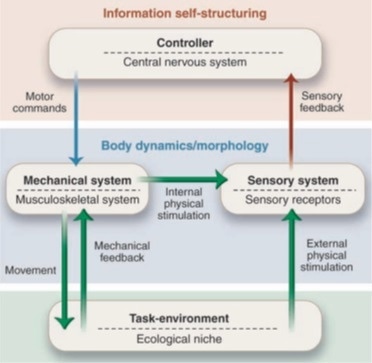Bioinspired robotics is the science and technology of designing machines to perform intelligent tasks, movements or decision-making abilities. Achieving thinking ability and responsive movement is a prime challenge in the field of robotics. The technological advances mimicking the biological realm have given birth to bioinspired robotics.

Uses of Bioinspired Robotics
Bioinspired robotics are used in search and rescue operations during disasters such as earthquakes, tsunamis and floods, for war-time security measures, inspecting industrial safety, monitoring pollution, observing and protecting wildlife, for use in nuclear power plants or radioactive labs, for unmanned space explorations, design prosthetics, and towards minimally invasive robotic-surgeries in medical fields. It also helps in studies such as exploring the complicated brain function.
Bioinspired robotics also often helps in understanding how the living organisms evolved: the development of body construction and organization, their responsive interactions, the decision-making abilities and their social behavior.
Advanced Techniques
Bioinspired robotics is now more possible due to new fields like computational science, materials science, nanotechnology and miniaturization science, and advanced techniques. These advances have provided (i) insights into the cellular and molecular functioning of the biological world and (ii) the ability to replicate in the man-made designs or robots. The 1.5 million diverse biological species have inspired a rich diverse biorobots, though on a much smaller scale. Walking insects, flying insects, spiders, moths, cockroaches, crabs, octopuses, school of fishes, army of ants, reptiles, frogs, dogs, cats, and primates have been an inspiration.
Geckos, a lizard, use dynamic adhesion process to move about. It has properties such as directionality, self-cleaning ability, rough surface adhesion and high adhesive stress. A synthetic adhesion system based on the understanding of the gecko’s adhesion mechanism is created, enabling a 70 Kg climber to efficiently scale a vertical glass. The physics of gecko adhesion and the synthetic polymer chemistry here has enabled a gecko-inspired climbing!

NATNN / Shutterstock
Snakes have a unique motion compared to other organisms. The snake’s locomotion, with many internal degrees of freedom, is a challenge to design, involving research in computational methods, mechanical design and control. Snake-robots are already designed; they have rotational motion and controls to command angular positions with many degrees of freedom. However, the gait of the snake involves cyclic motion and its control. The robotics of this gait is a special complication and is an ongoing research challenge.
Similar to the undulation motion of snakes, the caterpillar’s soft and flexible motion is a difficult task to replicate. Neuromechanical studies of larval moths and butterflies are undertaken to understand the movements better. The research inspired to create Softworms (soft robotic platforms) - ‘electrically powered and actuated using either shape-memory alloy micro coils or motor tendons’. The technology is versatile, lightweight and easy to fabricate. The softworms can crawl, inch, roll, and climb steep inclines. They are steerable and deformable.
Birds have inspired flightless man to take to the skies leading to the invention of the flying machines. The flight-robotics from mimicking the ingenious natural design of falling geckoes, gliding snakes, cruising seagulls, hovering humming birds, flapping insects, and floating maple seeds is an exciting new field. Birds, bats, insects and even flying snakes have inspired drone technology, which is used for helping people in different ways.
Conclusion
The inspirations from biology are infinite, and bioinspired robotics is infinitesimally small move. The success stories may give hope to the light at the end of the tunnel; however, it’s a long arduous tunnel for the robotics scientists and engineers.
Sources and Further Reading
Disclaimer: The views expressed here are those of the author expressed in their private capacity and do not necessarily represent the views of AZoM.com Limited T/A AZoNetwork the owner and operator of this website. This disclaimer forms part of the Terms and conditions of use of this website.